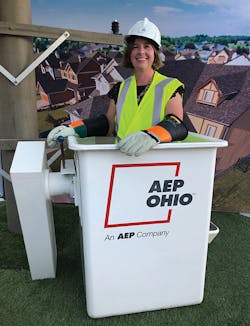The Linemen’s Legacy Lives On
Early linemen traveled across the country to build our nation’s power infrastructure. A century later, many of their great-grandchildren are still working in the power industry to keep the electricity flowing to their communities.
Line work is often a trade that lives on from one generation to the next, but what makes linemen want to follow in the footsteps of their parents, grandparents and even great-grandparents?
After talking to many linemen across North America during my 12 years with T&D World, I’ve discovered the answer—it’s not just a job, it’s a lifestyle; it allows linemen to do what they love while taking care of their families; and it’s a career based on pride, hard work and tradition.
In this year’s “Lineman Supplement,” we are taking a look at some of these special families. Within our “Line Legacies” story, linemen’s children and grandchildren share their stories about what it was like to grow up in a “line family.” Their parents also talk about how it feels to have their children work in the line trade, and in some cases, even on the same crew or International Lineman’s Rodeo team.
Take Zachary Haithcock, who has both a father and brother, as well as many other family members in the line trade. Haithcock, a journeyman lineman for Duke Energy, says he knew he wanted to be a lineman from early on during his childhood.
“I grew up always hearing my dad, uncles and other family members tell stories about doing line work, and I knew that is what I wanted to do too,” he said. “I could always tell my dad took pride in his work and that it wasn’t just a boring job or paycheck for him. I wanted to do the same thing.”
Taking On Mother Nature
As part of our annual tradition, we are also covering storms, but with a different twist. Senior Editor Jim Dukart traveled to a hard-hit area of the Midwest and wrote the story, “A Month of Tornadoes,” about the unprecedented amount of destruction and power outages caused by recent tornadoes.
I also wrote the story, “Standing Up to Storms,” to take a look at how utilities, which serve very different regions of the country, are strengthening their systems to be more resilient against whatever Mother Nature hurls their way—whether it’s an ice storm, flood, tornado or hurricane.
Over the decades, utilities have discovered strategies to minimize the impact of these severe storms and lessen the number of labor hours linemen must spend away from their families to restore power.
The storm-hardening techniques often vary widely from one region to the next, but the utilities are investing in such projects as raising critical equipment within flood-prone substations; swapping out wood infrastructure for steel, concrete or fiberglass; and building infrastructure that can withstand strong winds. As a result, they are often seeing a boost in reliability and a reduction in damage caused by horrific hurricanes, terrible tornadoes and formidable floods.
Training the Future
In our Lineman’s Supplements, we also often take a look at training centers nationwide and how they are preparing the next generation to build and maintain infrastructure. This year, we are placing the spotlight on training technologies such as virtual reality, driving simulations and hands-on environments.
Unlike in other occupations, linemen can’t simply learn the trade by reading a book or sitting in a classroom. Instead, they must be immersed in the technology to gain as much hands-on experience as possible in a safe, controlled environment before working out in the field.
Case in point: Con Edison created virtual reality programs that allow its students to practice certain tasks and even make mistakes—without putting their lives on the line. KV Power designed mobile trailers with virtual driving simulators to vet its new recruits before hiring them and sending them out to work on customers’ property.
Pacific Gas & Electric (PG&E) and American Electric Power (AEP) are both taking a hands-on approach to learning by providing actual equipment that the aspiring linemen will work on right in their training centers. Within AEP Ohio’s Transmission Training Center, apprentices and linemen can scale every type of infrastructure within the system—from traditional wood poles to the BOLD structures—in the training yard. In addition, PG&E just opened the doors to a new transformer training lab within its Livermore Training Center.
Other utilities across the country also have plans in the works for new additions to their training centers. For example, the Nebraska Public Power District (NPPD) is adding 32,000 sq ft of space, which will feature a substation, line and line structures.
By giving its up-and-coming linemen the opportunity to train on both simulated and hands-on equipment and structures, utilities are working toward their primary mission—to not only keep the lights on, but also to allow their linemen to come home safely each and every night.
